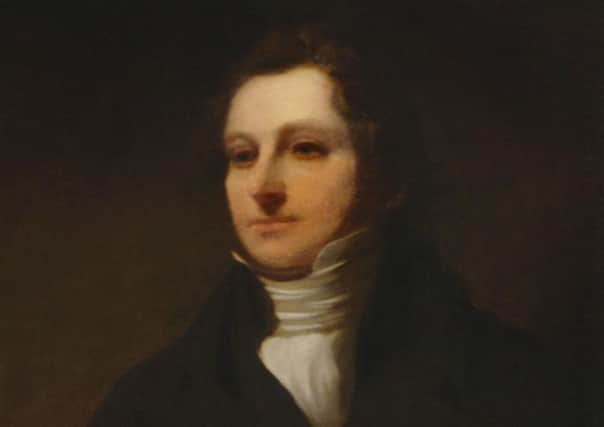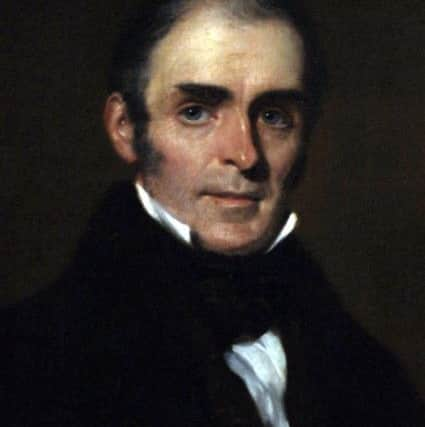Scotsman 200: A seditious rag smuggled into homes


At its birth in 1817, The Scotsman was about the size of a table napkin and, at first, was treated by some as a rag and a seditious one at that. Almost like an underground paper, it could be dangerous to be seen reading it. Professional men, especially, hid their copies, their careers at risk if they were seen opening its pages.
Within months of its birth – appropriately and inspiringly on 25 January, the birth of Robert Burns, a champion of free and often blunt speech – it had so upset Edinburgh, the capital of a country still in the grip of what the paper later described as “a sordid, servile and self-seeking Toryism, everywhere predominant, insolent and merciless”, that copies were being smuggled by clerks and porters to readers who dared not be seen buying them.
Advertisement
Hide AdAdvertisement
Hide AdNot only that, it was rumoured in the drawing rooms of the New Town and the winding streets and closes of the old that government spies were watching the paper’s messengers and making a list of those at whose houses copies were delivered. It was generally believed that the lists were shown to interested crown lawyers and magistrates.


Behind drawn curtains if necessary, , over ale jugs and claret cups and in coffee houses, The Scotsman created shockwaves of anger and delight. It struck a new and refreshing note in contemporary journalism, then mainly characterised by spineless conformity to the Tory line with leading articles often simply reprinted from London papers. The Scotsman not only vigorously attacked government, local and national, but also gave clear and considered guidance on topical affairs.
Heady stuff, the new paper was read avidly, not only by the rich man in his castle but the poor man at the gate seeking payment of his bills.
“That incendiary newspaper” fumed one Scottish lord telling his estate villagers that he had been pained to learn that some of them read it. If they stopped, he would supply them with more suitable newspapers at his own expense. Thus, to read The Scotsman then was to be a government enemy, one fit for treasons, stratagems and spoils.
The publication was the inspiration of two Scots in their thirties, Fife-born solicitor William Ritchie and customs official Charles Maclaren, who were indignant at the “unblushing subserviency” of local newspapers to the establishment. They were convinced that the capital needed a fearless and independent voice when city journals refused to print, even as an advertisement, a story written by Ritchie on the mismanagement of the Royal (then New) Infirmary.


The first issue, under the joint editorship of Ritchie and Maclaren, was an eight-page quarto journal, three columns to the page, published every Saturday, costing 10d including 4d stamp duty.
The break-even circulation was a weekly 300 copies and it was hoped that the paper would survive on circulation alone and not on advertisements, although adverts of a literary character were taken. That lofty commercial philosophy changed under economic pressure.
The paper’s masthead carried one thistle, the prickly, defiant emblem of Scotland. Later, two others were added to create a better design but also to emphasise that the paper could sting hard, especially if the welfare of Scotland was threatened.
Advertisement
Hide AdAdvertisement
Hide AdThe seven men of substance who founded The Scotsman had no experience of journalism and newspaper management and were not rich. Along with William Ritchie and his brother John, an Edinburgh haberdasher, there were John McDonald, silk manufacturer, John Robertson, bookseller, A Abernethy, printer, and John McDiarmid “of the Commercial Bank” – all members of Edinburgh’s bourgeois backbone.
Scotland in 1817 was just emerging from the so-called Dundas despotism. Henry, 1st Viscount Melville, had died six years earlier but his influence still held Scotland in thrall. The Scottish lawyer and statesman, who was able to control the great majority of Scotland’s parliamentary seats and was highly valued by Prime Minister Pitt the Younger, had been virtually the king of Scotland. In Dundas’ day, no-one had been able to get a place in the Scottish establishment, except through him. Scotland’s population was then only about 1.5 million and almost all wealth and rank were in the Tory party. Anyone who tried to form an opposition was soon the target of abuse of and persecution from an ever-watchful establishment.
Robert Burns nearly lost his position as an exciseman for speaking too freely and is said to have written a letter to the Scottish Board of Excise denying his Liberalism. Part of his crime was that he had subscribed to an Edinburgh Liberal paper.
The Scotsman unswervingly attacked that edifice of corruption and privilege, but it was a hard, uphill fight. Charles Maclaren’s description of Scotland in 1820 reads like an account of an oppressive Eastern Europe regime before Communism fell apart.
“Corruption and arrogance were the characteristics of the party in power. Scottish people were absolutely without voice either in vote or speech. Parliamentary elections, municipal government, the management of public bodies – everything was in the hands of a few hundred persons.
“In Edinburgh for instance, the member of Parliament was elected and the government carried on by 32 persons and almost all of them took their directions from the government of the day or its proconsul.” Public meetings were almost unknown and a free Press did not exist.
In 1852, Scottish judge and author Lord Cockburn, writing about that time, said the except for “some vulgar, stupid and rash newspapers which lasted only a few days, there was no respectable opposition paper until the appearance of The Scotsman which for 35 years has done so much for the popular cause, not merely by talent, spirit and consistency but by independent moderation.”
When The Scotsman appeared, two years after Waterloo, Edinburgh was sniffing the air of a new era. It replaced its ancient, gloomy and massive Tolbooth prison with a new, castellated one at Calton Hill; disbanded its decrepit City Guard or ‘Toun Rottens’; and built a new water supply.
Advertisement
Hide AdAdvertisement
Hide AdThe Augustan New Town, begun in 1767, was still being constructed and the city was then in the full tide of literary prestige. Sir Walter Scott, though still “the Great Unknown”, was to acknowledge authorship ten years afterwards of the highly popular Waverley Novels and epic poems, and the Edinburgh Monthly magazine, later Blackwood’s, appeared.
Alongside that literary upsurge, Scotland had its dark side, with Edinburgh’s town council mafia, described by Cockburn as “omnipotent, corrupt, impenetrable”.
Suddenly, the council was startled like twittering bats in the presence of a sudden light when The Scotsman began publishing reports of their secret meetings. The man responsible for these was John Robertson, one of the paper’s proprietors. His High Street bookshop, often filled with men of letters and others discussing the heresy of political reform, was regarded by Tories as “the den of sedition”.
He had no easy job. The self-elected council had Edinburgh in its grip, controlling light, water, education, paving, trade, including the port of Leith, the poor and the police, but without being, in any way, responsible to the people. It met, Cockburn wrote, in a low, dark, dirty “blackguard-looking room” at the corner of Parliament Square and the Lawnmarket “with some small dens off it for clerks”.
“Within this Pandemonium sat the town council… Nothing was beyond its grasp; no variety of opinion disturbed its unanimity… Silent, powerful, submissive, mysterious and irresponsible, it might have been sitting in Venice.”
It was a pity that Cockburn did not write such pithy stuff for The Scotsman. Robertson, however, had a pen sharp as a stiletto. Talking to sympathetic councillors, he picked up outlines of debates and decisions and although his exclusive reports were brief, they were mercilessly accurate and exposed the council’s palm-greasing affairs to public indignation and ridicule.
The public who were now buying The Scotsman in increasing numbers began to realise the need for municipal change, a harbinger of the great reform movements to come.
This article first appeared in Scotland’s Paper, published by Scotsman Publications and written by Albert Morris